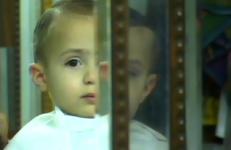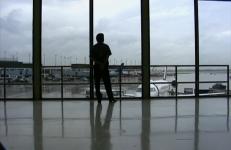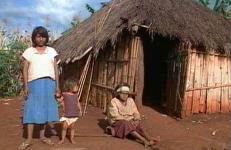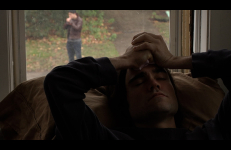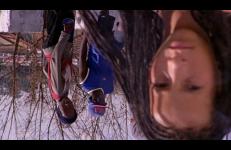We will live to see these things... is a documentary video in five parts about competing visions of an uncertain future. Shot in 2005/06 in Damascus, Syria, the work combines fiction and non-fiction. Each section of the piece--the chronicle of a building in downtown Damascus, an interview with a dissident intellectual, documentation of an equestrian event, the fever dream of a U.S.
Youth/Childhood
I could not remember anything about my childhood before the age of twelve. I made a decision to remember. West Fingerboard Road relays how I remembered my forgotten childhood memories, and references the writings of philosopher Gilles Deleuze that echo my ideas on memory and the process of remembering.
-- Susan Youssef
This moving video portrait follows a group of teenage boys who attend the Masada School, a school for juvenile delinquents and social misfits. The boys worked on every phase of the video, and present a picture of themselves that challenges society’s, and their own, typecasting. The humor, philosophy, and honest retelling of the students’ stories details the Catch-22 of living on the street, how parents' problems are passed on to the boys through abuse and neglect, and the struggle each feels to keep hope for a better life.
In this wistful tape, Segalove looks at how her childhood vision of the future holds up (or doesn't) in adulthood. Commissioned by the Los Angeles County Museum of Art.
Indians In Brazil is an educational series for Brazilian public schools that invites students to experience cultural diversity. Four teenagers are invited to discover a new world and participate in Indian daily life in two different communities. They show their emotions, curiosity and fears, and are surprised by their new friends. Part Two of the series, When God Visits the Village, sees the teenagers invited to visit the Kaiowá people in South Mato Grosso. Expecting something similar to the Krahô village they had earlier visited, they are at first shocked.
Indians In Brazil is an educational series for Brazilian public schools that invites students to experience cultural diversity. Four teenagers are invited to discover a new world and participate in Indian daily life in two different communities. They show their emotions, curiosity and fears, and are surprised by their new friends. Part Two of the series, When God Visits the Village, sees the teenagers invited to visit the Kaiowá people in South Mato Grosso. Expecting something similar to the Krahô village they had earlier visited, they are at first shocked.
Set in a post-industrial ‘Neverland’ of worn down row houses, looming factories, and desolate seashores, a rabble of deprived gender and age ambiguous youths explore their own vulnerabilities and put pressure on what it means to grow up. Misadventures that include impromptu races, nighttime spooning, cheating at card games, attempts at hypnotism, pocket knife haircuts, and sexual fantasies all function as means for the characters to attempt knowing one another.
Filmed in the remains of Soweto's historic Sans Souci Cinema (1948-1998), YOLO is a makeshift structuralist mash-up created in collaboration with the Eat My Dust youth collective from the Kliptown district of Soweto, South Africa. Vibrating with mic checks and sine waves, resonating with an array of pre-roll sound — this is cause-and-e ffect shattered again and again, temporarily undone.
O humans, You Only Live Once!




